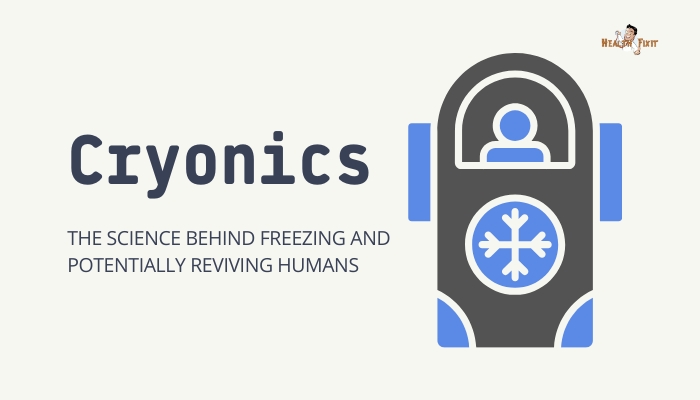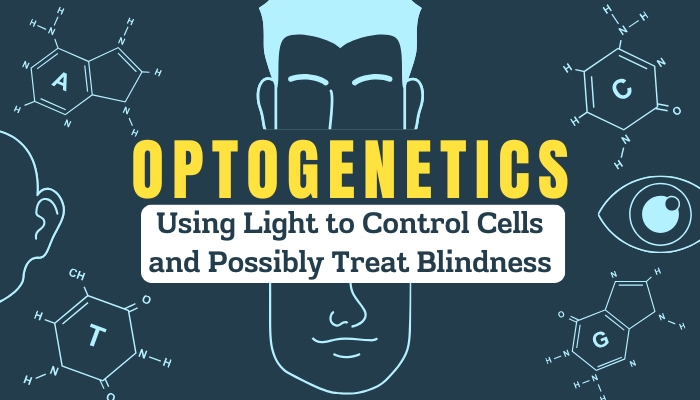Introduction
CRISPR-Cas9, the gene-editing tool that transformed molecular biology, has propelled the goal of treating—and potentially curing—genetic diseases closer to reality. By precisely targeting faulty genes at their source,
researchers aim to eliminate inherited conditions like sickle cell disease or certain forms of blindness. Multiple clinical trials now test CRISPR-based therapies, reflecting a leap from lab concept to patient application.
This article examines current breakthroughs, the hurdles (like safety and ethics), and what widespread CRISPR cures could mean for the future of medicine.
The Promise of CRISPR Gene Editing
Precision at the DNA Level
Unlike older gene therapies that insert new genes randomly, CRISPR can locate a specific DNA sequence and cut (or replace) it accurately. This direct approach addresses root genetic mutations—whether single base errors or large disruptive segments.
Broad Applicability
Because many diseases trace to genetic defects, CRISPR could, in theory, tackle numerous conditions—from monogenic issues (like cystic fibrosis) to more complex diseases. Already
labs experiment on everything from blood disorders (beta-thalassemia) to certain inherited cancers.
Ex Vivo vs. In Vivo Approaches
In some trials, patient cells (e.g., bone marrow stem cells) are edited outside the body, then re-infused. This ensures controlled editing and screening. Future methods aim for in vivo editing—injecting CRISPR directly into the patient’s tissues, an approach that demands meticulous targeting to avoid widespread off-target effects.
Landmark Clinical Trials
Sickle Cell and Beta-Thalassemia
One of the earliest CRISPR therapy successes involved ex vivo editing of blood stem cells to correct hemoglobin genes. Patients with sickle cell disease or beta-thalassemia have shown reduced symptoms and reduced transfusion needs. These trials from companies like CRISPR Therapeutics and Vertex highlight real-world gene editing’s promise.
Inherited Blindness
Another milestone is in vivo CRISPR delivered via subretinal or intravitreal injections to treat conditions like Leber congenital amaurosis.
Early-phase trials measure safety and potential partial vision restoration. While results are preliminary, they exemplify CRISPR’s potential beyond blood-based disorders.
Rare Neurological Disorders
Some research focuses on conditions like Huntington’s disease or Angelman syndrome, where a single faulty gene drives pathology.
While therapy might revolve around short-term gene silencing or correction, CRISPR’s permanent edits could provide a more robust fix—pending sufficient safety data and targeted brain delivery methods.
Challenges and Safety Concerns
Off-Target Edits
CRISPR’s hallmark is its specificity, but it can still inadvertently cut similar DNA sequences. Such off-target events might cause harmful mutations—cancer risk or organ dysfunction. Current solutions involve high-fidelity Cas enzymes or improved guide RNA design. But absolutely zero off-target risk is elusive, requiring thorough screening.
Immune Response
The immune system might attack the Cas9 protein or the edited cells themselves. Strategies include using less immunogenic Cas variants or transient immunosuppression. Trials carefully monitor immune reactions to prevent complications that hamper therapy success.
Delivery and Scalability
CRISPR therapies rely on viral vectors or lipid nanoparticles to deliver the editing machinery. Achieving consistent,
efficient, and safe gene editing across millions of patient cells is difficult. Ex vivo manipulations face manufacturing scale challenges, while in vivo deliveries risk distributing CRISPR to unwanted tissues.
Ethical and Regulatory Landscape
Germline Editing Controversy
While therapies for somatic cells (non-heritable) garner broad acceptance if proven safe, germline editing—where changes pass to offspring—sparks heavy debate. Many countries ban or heavily regulate it
citing moral and societal implications. The rogue experiment in 2018 that produced CRISPR-edited babies underscores concerns about eugenics and unintended consequences.
Clinical Trial Oversight
Agencies like FDA or EMA carefully evaluate gene editing trials for safety milestones. Trials typically progress slowly, requiring robust preclinical evidence. Ensuring participants comprehend the irreversible nature of genetic modifications is also crucial for informed consent.
Cost and Equity
If CRISPR cures become commercial, cost could be immense—similar to current gene therapies priced in the millions.
Ensuring equitable access for patients with genetic diseases is a looming question. Payers and governments might intervene to negotiate or fund therapies that promise one-time cures.
Potential Impact on Healthcare
Shift to Cure vs. Management
Gene editing tackles root causes, freeing patients from lifelong medications or symptomatic treatments. For conditions like sickle cell, a one-time CRISPR infusion might replace years of transfusions or hospitalizations—transforming health economics and patient quality of life.
Personalized Medicine Gains Momentum
Each patient’s unique genetics or disease variant might drive a personalized CRISPR-based therapy. If labs can quickly design tailored guide RNAs for each mutation, the pipeline from diagnosis to cure could become more direct—though needing robust infrastructure.
More Complex Disease Targets
If CRISPR outgrows monogenic diseases, it might tackle polygenic disorders (e.g., type 2 diabetes or heart disease) by editing multiple genes. That prospect remains distant, requiring breakthroughs in precise multi-gene editing and risk-balancing complexities.
Next Steps in Research
Improving Editing Tools
Variations like base editors or prime editing refine CRISPR’s approach, limiting double-strand breaks or offering single-nucleotide corrections. Such advanced tools might reduce off-target risk or broaden treatable mutation types.
Universal Donor Cells
Allogeneic cell therapies—where universal “off-the-shelf” CRISPR-edited cells can treat many patients—could streamline therapy.
This strategy involves removing immunogenic markers, letting donated cells incorporate seamlessly. Early efforts aim to create universal T-cells for immunotherapy.
Standardizing Efficacy Markers
Long-term follow-up is mandatory. Trials track whether corrected cells stay functional for years, measuring relapse or partial improvements. Standardizing endpoints (like specific protein levels or functional assays) fosters comparability across trials.
Practical Considerations for Patients
- Seek Clinical Trials: If you have a genetic disease, watch for CRISPR trials—particularly for sickle cell, beta-thalassemia, or rare eye disorders. Specialized centers or registries might list open enrollments.
- Understand Risks: Gene editing is permanent. While many benefits exist, weigh potential off-target issues or unanticipated side effects. Informed consent is crucial.
- Genetic Counseling: If a CRISPR therapy suits you, talk to a genetic counselor about heritability, possible outcomes, and uncertain long-term data.
- Stay Realistic: The hype is significant. Even if early trial results are encouraging, full regulatory approval might take years. Standard-of-care therapies remain vital in the meantime.
Conclusion
CRISPR gene editing stands at the forefront of a revolutionary approach to genetic diseases—potentially curing them outright rather than merely containing symptoms.
Early clinical trials targeting blood disorders and inherited blindness show that real-world application is no longer a distant dream. Yet challenges—off-target edits, immune responses, ethical debates,and cost—remain formidable.
Over time, though, as we refine gene editing precision and expand its scope, CRISPR-based cures might become routine for a growing list of genetic illnesses, offering hope to millions who previously had none.
The coming decade will reveal whether these breakthroughs truly fulfill the promise of rewriting our defective genes and transforming the landscape of modern medicine.
References
- Ledford H. CRISPR treatment inserted directly into the body for first time. Nature. 2020;579(7799):185.
- Frangoul H, Altshuler D, et al. CRISPR-Cas9 gene editing for sickle cell disease and β-thalassemia. N Engl J Med. 2020;384(3):252–260.
- Gillmore JD, et al. CRISPR-based therapy for transthyretin amyloidosis. N Engl J Med. 2021;385(6):493–502.
- Porteus M. Genome editing in human stem cells. Biol Blood Marrow Transplant. 2020;26(7):1295–1300.
- Zafar F, Sherpa M, Freed B, Freedman T. The future of CRISPR in eye diseases: stepping toward clinical trials. Prog Retin Eye Res. 2021;85:100965.
- Goswami R, et al. Gene therapy leaves the nest: soared by CRISPR. Curr Opin Genet Dev. 2020;65:1–8.
- Iyer V, et al. Off-target mutations in CRISPR/Cas9-treated cells. Nat Methods. 2015;12(6):479–484.
- National Academies of Sciences, Engineering, and Medicine. Human Genome Editing: Science, Ethics, and Governance. The National Academies Press; 2017.
- Cox DB, Platt RJ, Zhang F. Therapeutic genome editing: prospects and challenges. Nat Med. 2015;21(2):121–131.
- Terry SF, Terry PF. The global view of gene editing in patient advocacy. Genes. 2021;12(2):193.





